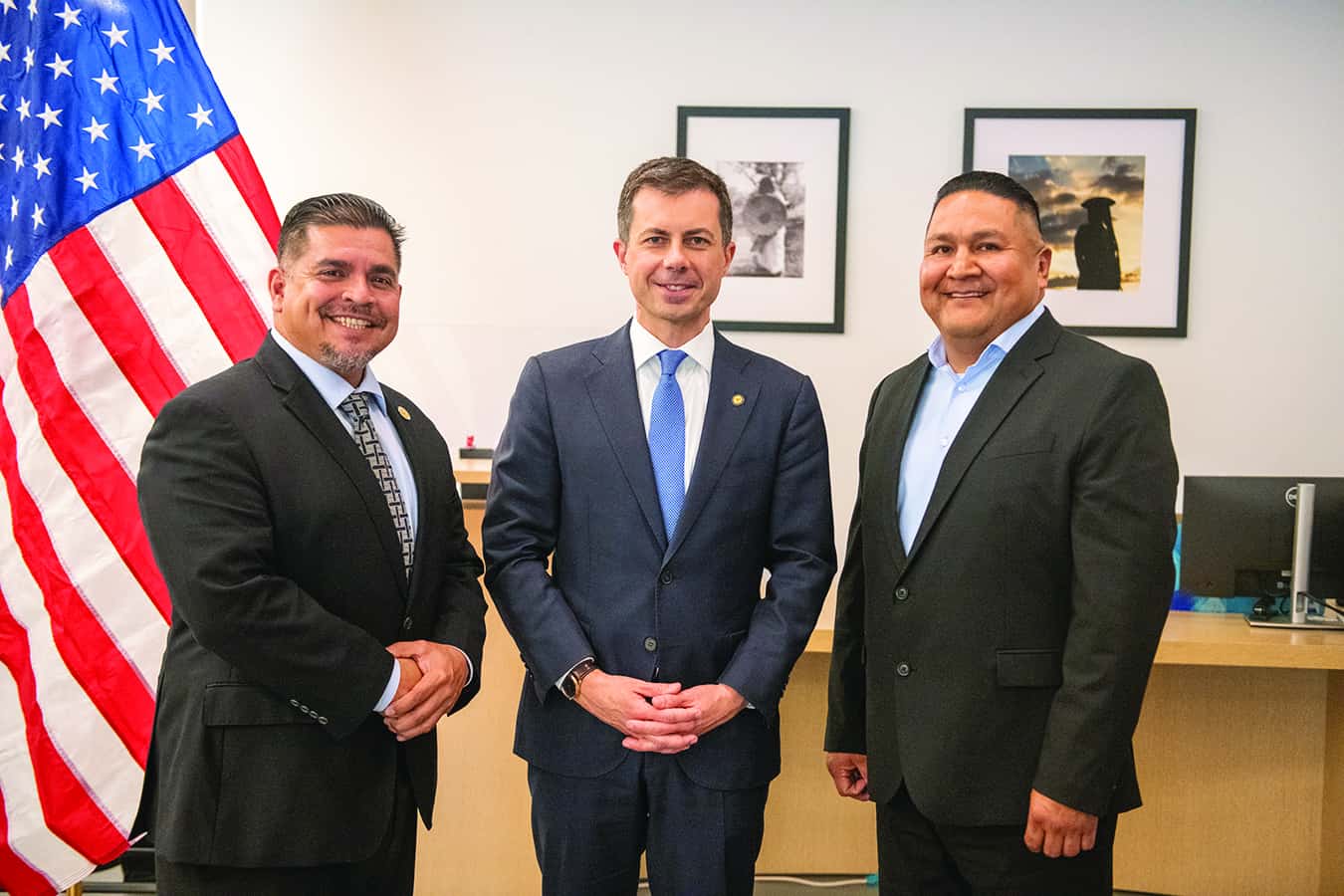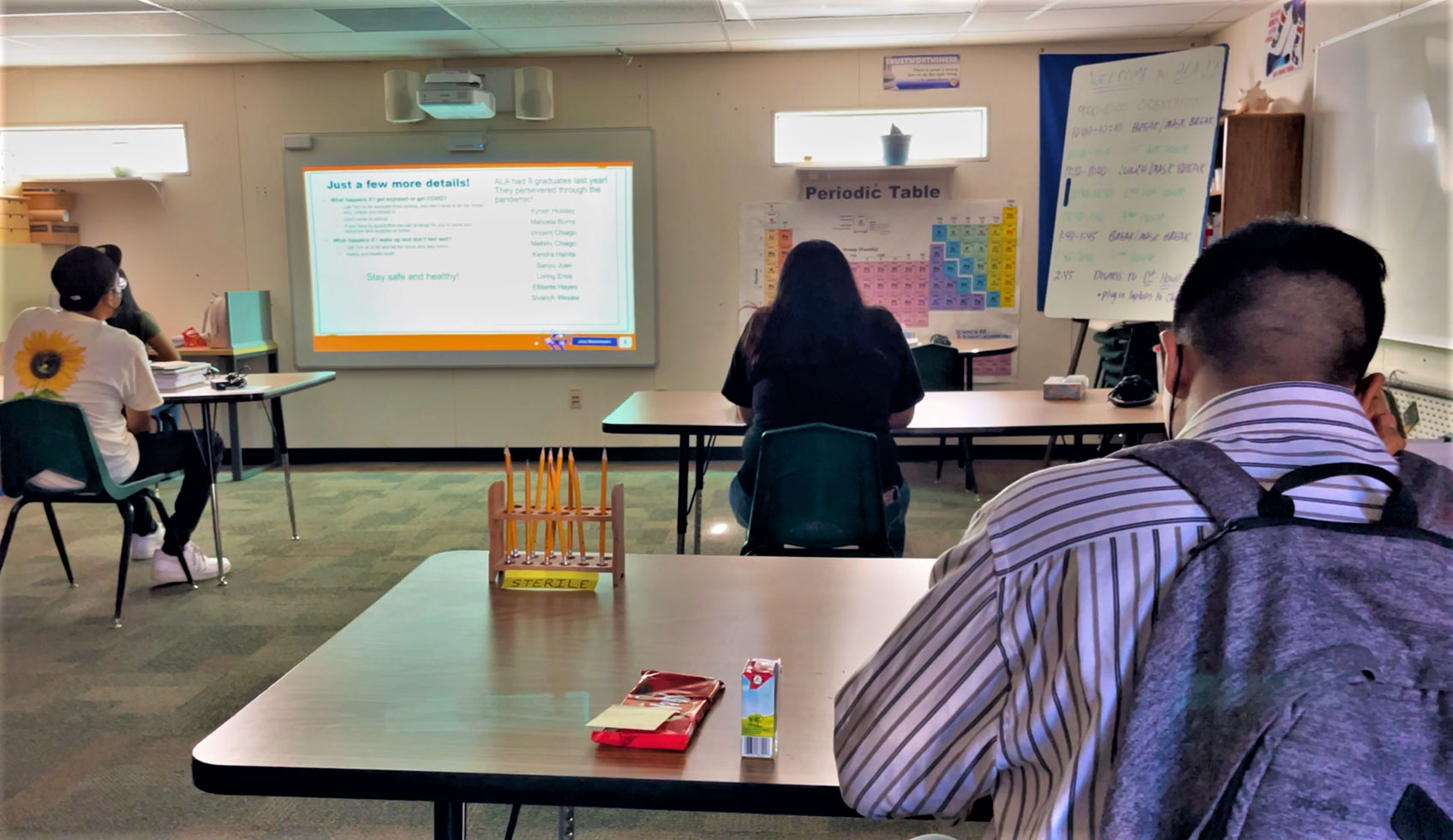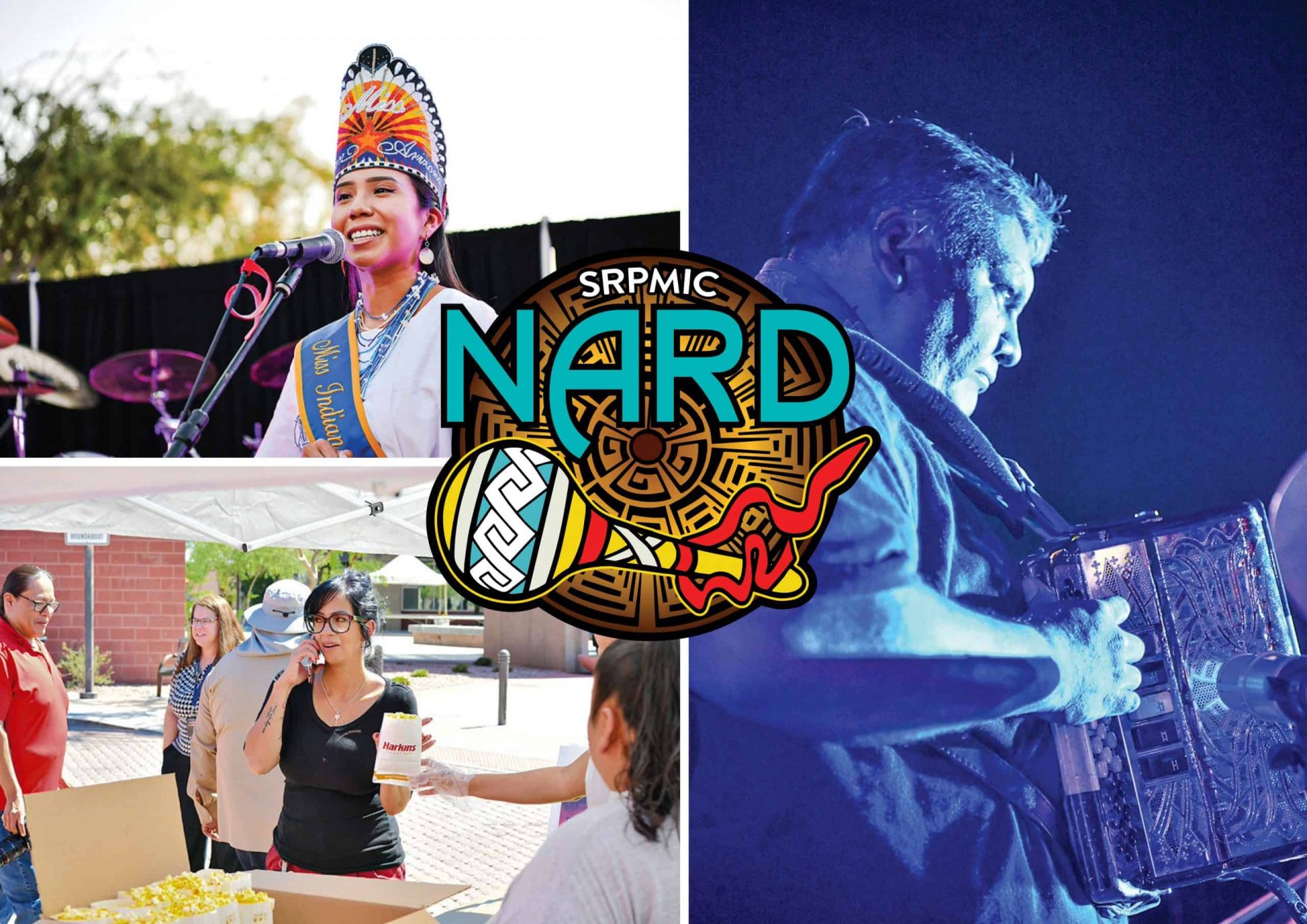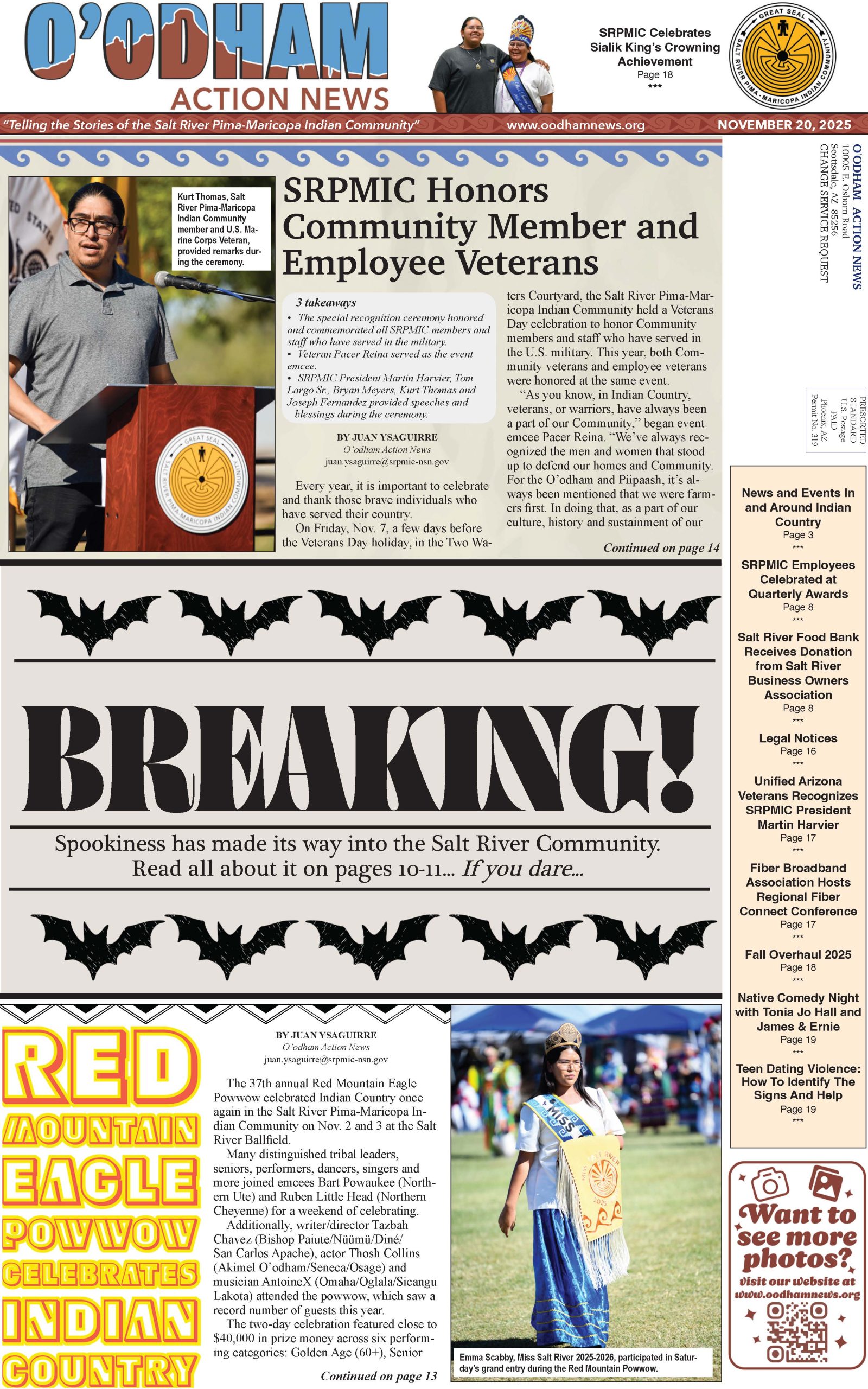VIEWS: 4734
June 16, 2021SRPMIC Community Day a Time of Reflection
June 14 is Community Day in the Salt River Pima-Maricopa Indian Community, and what the day represents holds different meanings to Community members.
On June 14, 2004, SRPMIC Council established the day with an official proclamation to recognize the 125th anniversary of the June 14, 1879, executive order signed by President Rutherford B. Hayes, which reserved a portion of land and established the Community. This executive order reduced the Salt River portion of the reserve, which was recognized a few months earlier by executive order on January 10, 1879, from approximately 680,000 acres to just 46,627 acres, after complaints from settlers that too much land was being given to the tribe.
There are mixed feelings within the Community about recognizing the day, however SRPMIC Community Relations Office Director Janet Johnson said that the survival and existence of the O’odham and Piipaash people is the celebration. “This is our celebration to pay homage to our ancestors and their sacrifices and recognize the traditional and cultural values of both the Onk Akimel O’odham and Xalychidom Piipaash,” said Johnson.
SRPMIC Director of Cultural Resources Kelly Washington remembers the day that he found out about Council establishing Community Day. He said that his initial reaction was wondering why the Community was celebrating that particular day. “A lot of our [O’odham and Piipaash] history is scattered. It was not taught in schools for the most part, and we didn’t have websites. The time before the executive order was not really known to tribal members, except through family stories,” said Washington.
“I decided to treat [Community Day] as a learning opportunity, and so I went about trying to create a timeline that hit on some highlights throughout our history.”
Washington said that on the day of the executive order in 1879, the Community became physically separated from relatives on the Gila River as far as having two separate land bases.
With the timeline, Washington wanted to recognize the continuity of the relationship of the land and Community’s ancestors leading up to the executive order, which may have been a shock to some Community members.
The original boundaries set by the first executive order in January 1879 extended eastward 2 miles north and south of the Salt River, all the way up to what is now recognized as the Fort Apache Reservation. To the west and south, the land extended through the Valley to include what is now present-day Paradise Valley, Avondale, Tolleson, Phoenix, Glendale, Chandler, Gilbert and most of Mesa.
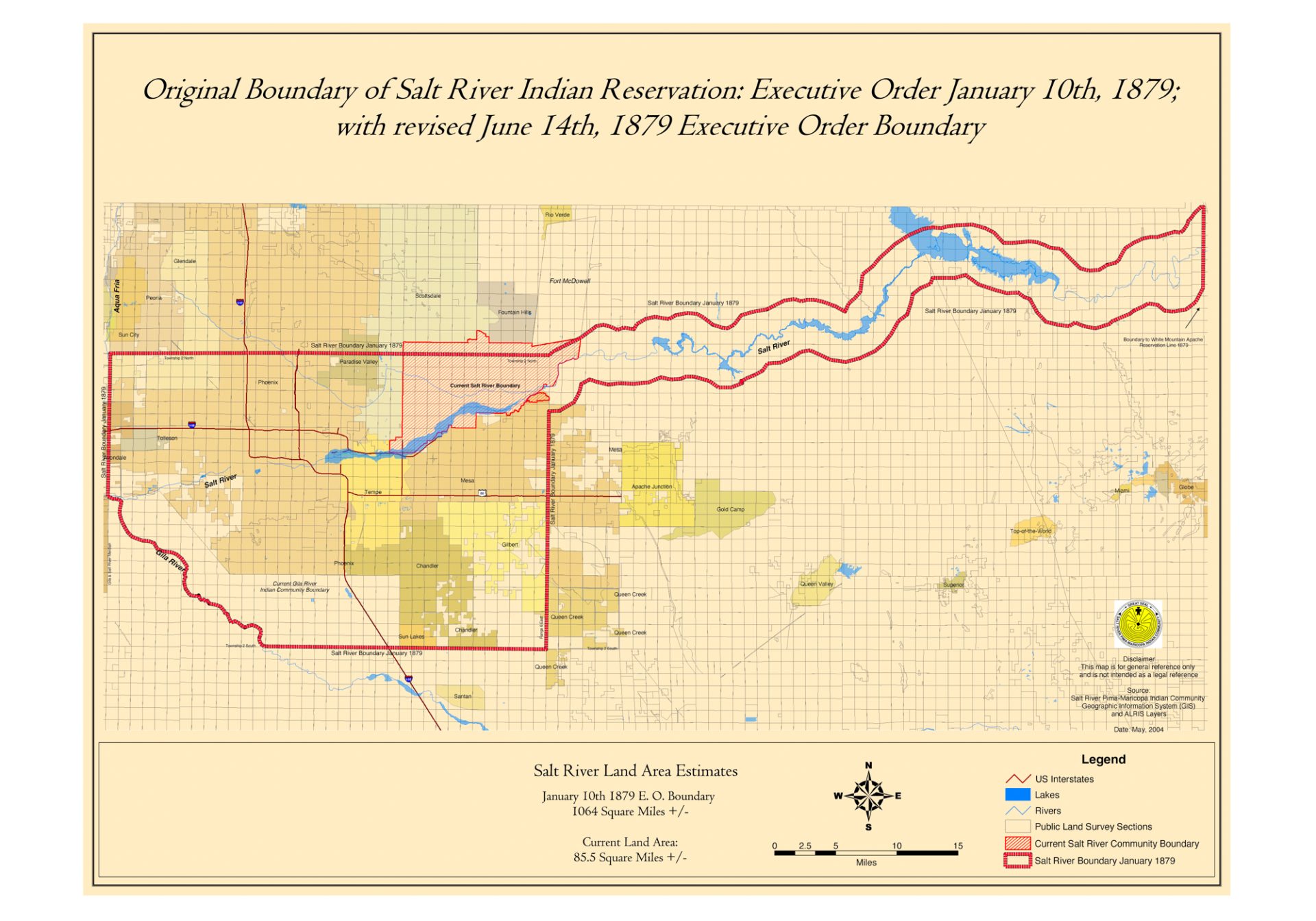
“I don’t think it was quite the history that some people were expecting, because it seemed like kind of a downer in a sense,” said Washington. “I wanted to present it as ‘This is our history’ and this is just what happened. What we celebrate, if anything, is that we still exist. We’re still here. It could have very [easily] been a different story. This demonstrates that there are gaps in our history that we need to fill in for ourselves, for the Phoenix Valley, for non-tribal people, and for the world as far as I’m concerned. I’d like our story to be known.”
Since 2004, SRPMIC has celebrated the day with song, dance, artisans, promotional giveaways and feasts. Community Day has grown to include food vendors, information tables, chicken scratch bands and dance contests.
In 2010, the proclamation was modified to include involvement by Community departments and programs, organizations, schools, places of worship and members of the Community, and provides examples on how they can take part to recognize the historic day. The 2010 Proclamation is the current one that the Community uses today.
When the COVID-19 pandemic arrived last year, the CRO Events team developed a virtual Community Day program of music and demonstrations and provided a promotional giveaway.
“Due to the given status, the 2021 celebration remained virtual, with various activities taking place throughout the month, including a partnership with Congressman Greg Stanton’s office recognizing three Community members (Council member Diane Enos, former Council member Ruth Chough, and the late Violet Perkins), with each [recognized] in the Congressional Record,” said Johnson.


